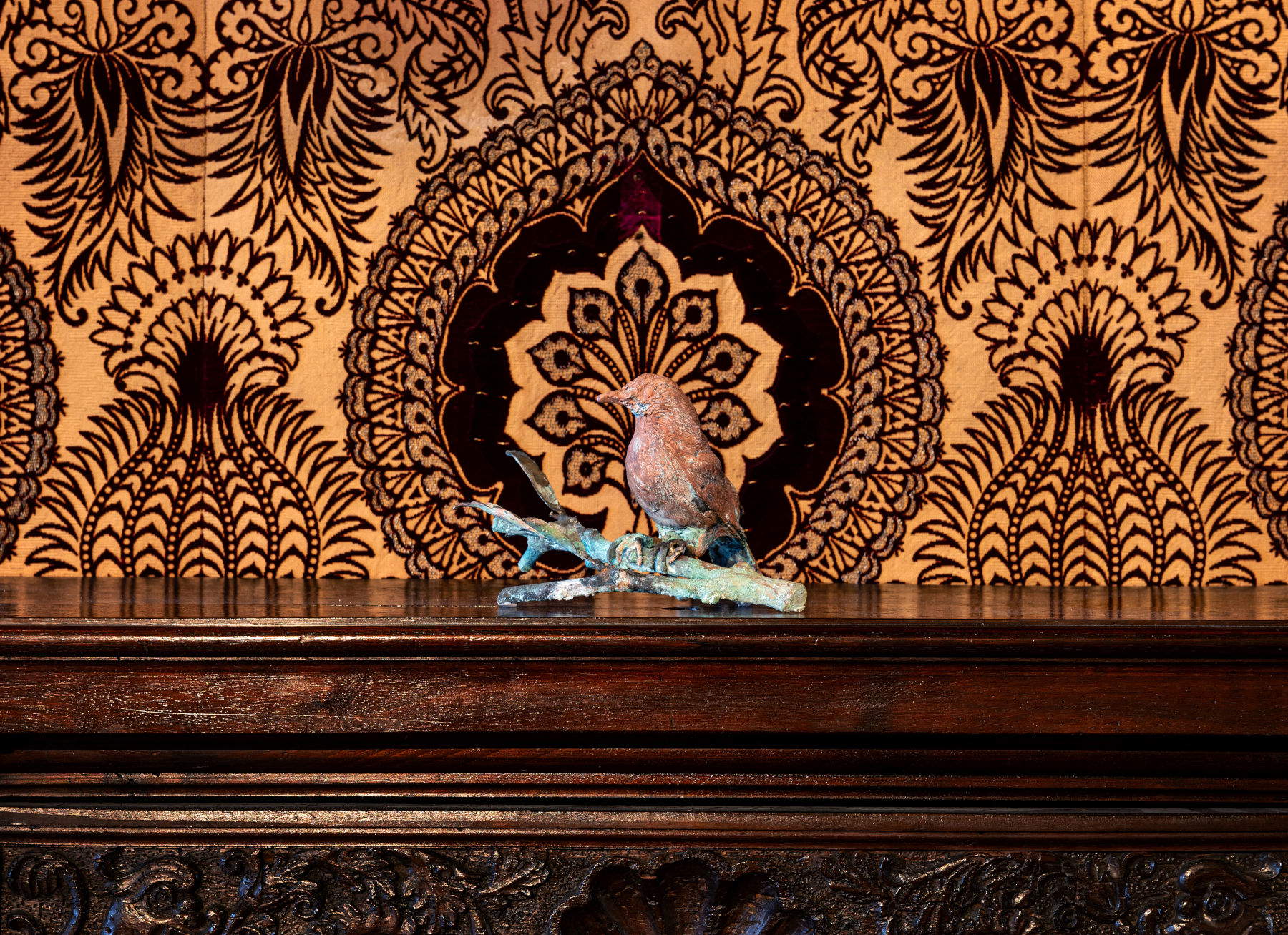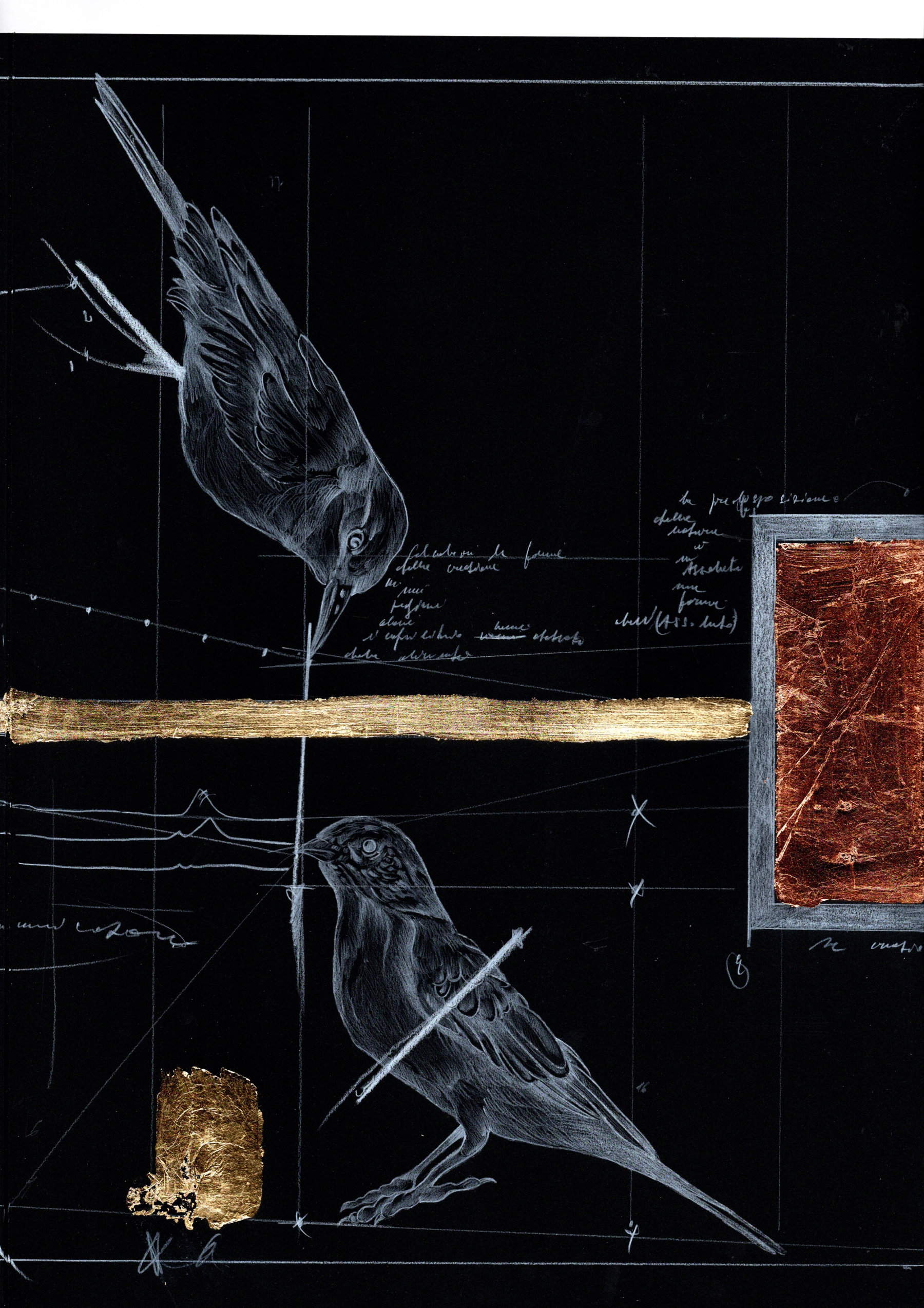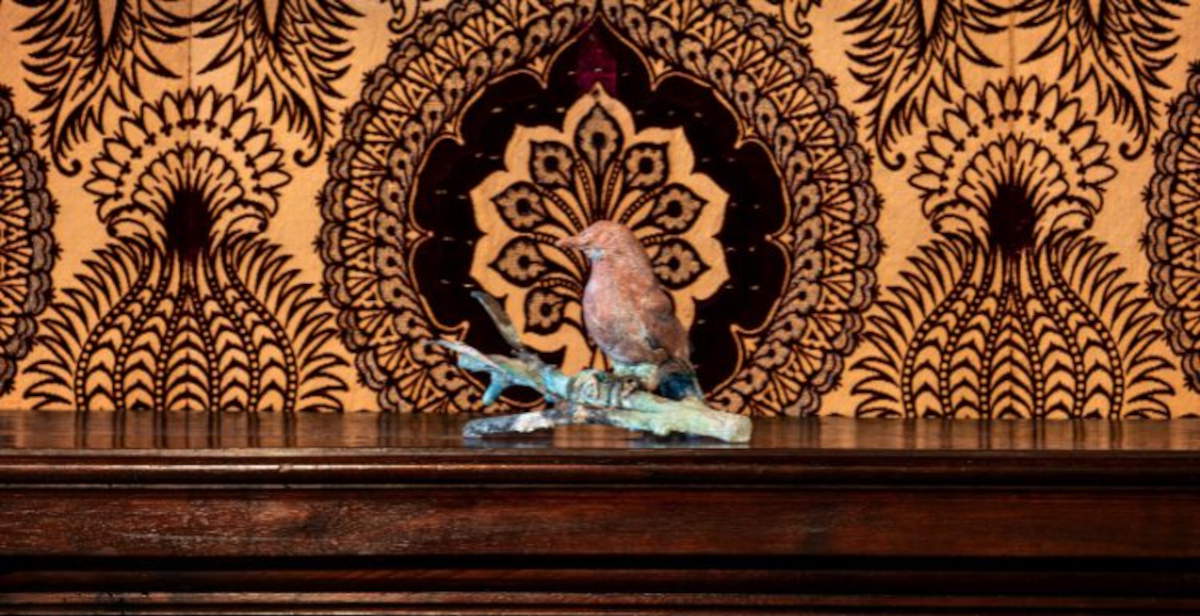BUILDING and Museo Bagatti Valsecchi present the new chapter of the exhibition Transitum, a solo show by artist Fabrizio Cotognini, curated by Marina Dacci, hosted from June 20 to September 14, 2025 in the halls of Milan’s famous house museum. The project develops along an exhibition itinerary articulated in three venues, BUILDING GALLERY, Moshe Tabibnia Gallery and Museo Bagatti Valsecchi, each of which represents an autonomous but interconnected piece of the artist’s visual and conceptual thought. The title of the exhibition, Transitum, refers to the concept of passage, of crossing between states, epochs, languages and dimensions, in an investigation that constantly interrogates the liminal nature of images, memory and time.
“Birds are symbols of absolute freedom of thought, imagination and rapid relationship with the spirit,” notes curator Marina Dacci. "Linked to the element air, they are considered messengers between earth and sky, transcending traditional concepts of space and time. In many cultures, they appear in creation myths as divine beings facilitating important cultural, scientific and technical inventions from a perspective of continuous transformation. In alchemy, birds are the forces in activity: in ascent they lead back to sublimation, in descent to condensation, the two symbols united in the same figure signifying distillation. Fabrizio Cotognini’s two-headed bird is the guiding image of the Transitum exhibition project at the BUILDING gallery. These winged guests (whether embodied in microcastings or drawn on paper) accompany the visitor through each exhibition floor of the show. After visiting Museo Bagatti Valsecchi, it was natural to ideally open wide the gallery windows and let a small flock migrate to this stately and visionary neo-Renaissance mansion, capable of generating a bridge between five centuries thanks to its extraordinary collections of paintings, furniture and applied art artifacts. Cotognini’s microfusions are harmoniously placed in a few rooms, selected to trigger a silent and evocative dialogue between the artist’s flights, the rooms of the house museum and the works that constitute its identity core. The centerpiece of this encounter is the Historical Library, an authentic Wunderkammer where-among the Renaissance mirabilia and scientific instruments-the artist’s book How to Explain to Birds that the Sun Belongs to Everyone rests on the large 15th-century wooden table as a poetic relic dedicated to the flight of birds. Eight other rooms of the Museum will be populated by the microfusions: both in the state rooms, such as the Dining Room and the Arms Gallery, and in the more intimate spaces of the private apartments of brothers Fausto and Giuseppe Bagatti Valsecchi. In this itinerary, the public will be called to observe carefully and discover Cotognini’s contemporary forays in an itinerary that combines surprise and contemplation."

In the center of Milan, the Museo Bagatti Valsecchi, a place that already in itself holds a tension between the real and the reconstructed, between authentic history and an idealized vision of the past, turns out to be an ideal stage to accommodate Cotognini’s intervention. His works fit into the groove of an implicit continuity, suggesting new narratives and visual short-circuits between what is kept and what is evoked. The thirteen works on display seek to establish a silent dialogue with it, made of resonances, slippages, and symbolic contaminations. Protagonists of the installation are the twelve bronze microcastings entitledHybridatio Mundi (2024-2025), created by the artist with a refined technique and an almost philological approach to the material. Each sculpture, depicting a bird in an absorbed or dynamic position, is transformed into a complex symbol, suspended between biology and mythology, nature and artifice. Birds, which have always been emblems of passage and freedom, embody here an idea of boundary, of threshold between different worlds, terrestrial and celestial, human and animal, visible and invisible, activating a direct dialogue with the museum’s permanent collections and with the very concept of Wunderkammer. Completing the journey is the precious artist’s book How to Explain to Birds that the Sun BelongstoEveryone (2020), a work that synthesizes Cotognini’s poetics in its most intimate and visionary dimension. Composed of drawings, writings, and annotations, the book takes the form of a diary of thought, a private archive of images and reflections that escape linearity and are arranged as fragments of an open discourse. It traces the layered soul of the artist’s practice, which draws freely on literary, historical, scientific and iconographic sources, giving rise to a universe suspended between rigor and imagination. The dialogue between Cotognini and Museo Bagatti Valsecchi does not end in the simple juxtaposition of contemporary works and historical context: rather, it is an alchemical encounter, where the domestic dimension of the museum house amplifies the narrative tension of the works, and where time, instead of stabilizing, fragments, decomposes, and refracts into a constellation of signs and visions.
The concept of transformation, now declined in the idea of “multiple identity,” underlies the portrait cycle Who is Christian Rosenkreutz (2024). The theme is expressed by different personalities immortalized in the portraits, also finding a natural development in the works dedicated to theAndrogyne and the Double (2024) and in Studies on Alchemy (2024); among the latter, Alchimia Mundi (2025), taken from a fifteenth-century English psalter, stands out: an artist’s book of more than five meters that occupies a niche in the room, unfurling like a waterfall and accommodating rich imagery on the creation of the world. The journey continues with No Monster’s Land (2018), installed on the second floor of the museum, in which the concept of transformation is developed as hybridization and the life-death relationship, not understood as an end but as a possible evolutionary form. On the second floor of the gallery, the exhibition offers a “lunge” on theater, Cotognini’s other great passion, understood as a “machine of memory and clairvoyance, an instrument of knowledge and transformation of man and the world that welcomes him,” as Marina Dacci writes.
Protagonists are some works related to the staging of Parsifal performed in New York in 1904, installed emulating the semi-cyclical theatrical structure of the Delminian tradition. Opposite is a picture gallery of antique engravings dedicated to theatrical structures, on which the artist has intervened with objects and figures that symbolically amplify pivotal moments of the Wagnerian drama. The long sleeve of the second floor hosts the series The 12 Knights of the Round Table (homage to Salvator Rosa) (2024), which is inspired by the Knights of the Holy Grail, creating a direct anchorage with the Wagnerian opera presented in the main room. The second floor of the gallery closes the itinerary with a reflection on the deep connection between memory and imagination. Two optical machines become devices of vision and loci of memory. In one, an anamorphosis depicts two images of Athanasius Kircher, in youth and old age, chasing each other and recomposing. In the other, a bronze cast of the philosopher’s head as a young man projects the constellation Swan on the ground, a tribute to the Kircherian idea of correspondence between macrocosm and microcosm. The two installations establish a direct dialogue with the series Mappe Celesti (2025), in particular with the works The Song of the Stars - Galileo and The Song of the Stars - John Dee, made on original engravings from the 17th century.
Documenting the exhibition is the catalog Transitum, published by BUILDING editore, which includes critical essays by Marina Dacci, Silvia Bottani, Agostino De Rosa and Tommaso Ghezzani, offering a multidisciplinary reading of the artist’s research. The volume testifies to the articulation and depth of the project in the three venues involved, serving as a tool for theoretical reflection and visual documentation. After the stages at BUILDING GALLERY (until July 19, 2025) and Moshe Tabibnia Gallery (until July 5, 2025), the chapter at Museo Bagatti Valsecchi represents a culminating moment of the project, in which the private history of a collection becomes the living background for an open narrative about the present and its connections with the invisible, the mythical, and the ancient.

Born in Macerata in 1983, Fabrizio Cotognini lives and works in Civitanova Marche. After graduating in Painting and Sculpture from the Academy of Fine Arts in Macerata in 2009, he embarked on a research path that constantly interweaves past and present. At the center of his work are time, memory and myth, themes investigated through conceptual and formal tools from history, literature, architecture and theater. These languages, in his works, overlap and merge into dense narratives, where iconography and the written word reinforce each other. Drawing represents the core of his artistic practice: he makes it on panel, often intervening on period engravings, of which he is a passionate collector, or he transforms it into artist’s books and visual diaries. His fascination with alchemy has led him to in-depth experimentation with materials and production techniques, both for two-dimensional works and sculptures, focusing in recent years on microcasting.
His exhibition activity began early, with participation in group exhibitions since 2003 and solo exhibitions since 2011. Winner or finalist of numerous Italian art awards, including the Cairo Prize, Cotognini has often collaborated with public and private institutions, developing site-specific projects for venues such as the Fondazione Sandretto Re Rebaudengo in Turin, the Parco dei Fori Imperiali in Rome, Palazzo Buonaccorsi in Macerata, the Teatro Anatomico dell’Archiginnasio in Bologna, the American Academy in Rome, the Archaeological Museum in Salerno, the Palazzo Ducale in Urbino, Palazzo Magnani in Reggio Emilia, the Pastificio Cerere Foundation in Rome, Castel Sant’Elmo and the Morra Greco Foundation in Naples. His works have also been exhibited internationally, in venues such as the ICI in Bern, Oficina in Barcelona, Hero Gallery in Amsterdam, the ICI in Caracas, Centro de Desarrollo de las Artes Visuales in Havana, and the National Gallery in Georgia. His work has also been included in prestigious events such as the Thessaloniki Biennial, Manifesta 12 in Palermo, the Biennale del Disegno in Rimini, the Mediterranean Biennial, and numerous side events of the Venice Biennale, as well as in art fairs of national and international significance.
 |
| Fabrizio Cotognini dialogues with Museo Bagatti Valsecchi in his new solo show |
Warning: the translation into English of the original Italian article was created using automatic tools. We undertake to review all articles, but we do not guarantee the total absence of inaccuracies in the translation due to the program. You can find the original by clicking on the ITA button. If you find any mistake,please contact us.